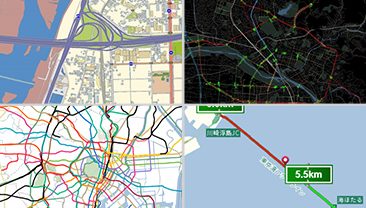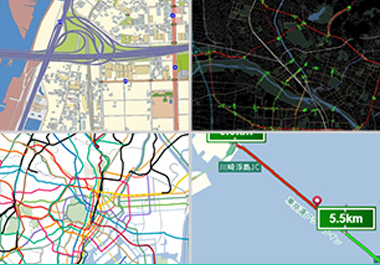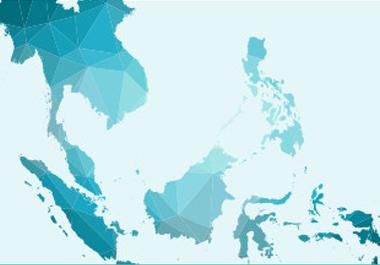Here are the top five problems foreign visitors to Japan encounter. Guess what number one is. What can we see in our future businesses for inbound visitors to Japan?
Japan is one of the most popular tourism destinations in the world. Looking around the world, there must be millions of people who have unwillingly given up a plan to visit Japan due to the global COVID-19 pandemic. In the pre-COVID-19 era, the tourism industry in Japan tackled various efforts in many different places to increase the demand for inbound tourists. In Tokyo, it looked like 20 to 30% of passersby in Ginza, Ueno, and Shinjuku were foreigners in those times. However, what bothers inbound tourists during their trip to Japan?
First, let’s take a look at a survey conducted by the Japan Tourism Agency.
Japan is one of the most popular tourism destinations in the world. Looking around the world, there must be millions of people who have unwillingly given up a plan to visit Japan due to the global COVID-19 pandemic. In the pre-COVID-19 era, the tourism industry in Japan tackled various efforts in many different places to increase the demand for inbound tourists. In Tokyo, it looked like 20 to 30% of passersby in Ginza, Ueno, and Shinjuku were foreigners in those times. However, what bothers inbound tourists during their trip to Japan?
First, let’s take a look at a survey conducted by the Japan Tourism Agency.

What do foreign visitors to Japan have problems with?
In 2018, the Japan Tourism Agency conducted a survey to find out what bothers foreign visitors to Japan during their trip and how they use public transport. The Japan Tourism Agency then announced the survey results in March 2019.
No. 5 — Complicated guide displays written in multiple languages (16.4%)
Although the number of information guides written in English, Chinese, and Korean have been increasing in recent years, many places, even sightseeing areas, still do not have sufficient information guides written in foreign languages. In the same way that we, Japanese would feel at ease when we find an information guide display written in Japanese in a foreign country.
No. 4 — Public transportation usability (16.6%)
The survey shows that there are some inbound visitors to Japan who are inconvenienced by the use of public transport including trains and buses. Even Japanese people know how difficult it is to change trains at stations in the metropolitan area. Also, in rural areas in Japan, we still need to promote improvement of the public transportation for foreign visitors.
No. 3 — Free public Wi-Fi (18.7%)
Free Wi-Fi is indispensable infrastructure for foreign visitors to Japan. Free Wi-Fi services have been becoming popular in Japan too, but Japan is still far behind other free-Wi-Fi developed countries.
No. 2 — Difficulty in communication with staffs (20.6%)
Some people say that Japanese people don’t have to speak English in Japan. Given the demand for inbound tourists, however, it is also true that staffs in tourism facilities need to speak English to communicate with foreigners. Useful translation applications have been developed recently and use of such an application may be a good idea. Whether you can speak a foreign language or not is not a big deal. What is more important is your effort to somehow communicate with foreign visitors.
No. 1 — Had no problems/difficulties (36.6%)
No. 1 is “I had no problems/difficulties.” You might not expect this result, but Japan has been preparing for accepting inbound visitors to Japan in recent years such that it is now commonplace. Japan will keep accepting inbound visitors more willingly while providing multi-language services. At the same time, you need to be aware that 63.4% of foreign visitors to Japan did have some sort of trouble. After the end of the pandemic of COVID-19, the number of foreigners who visit Japan will gradually go up again. When we welcome inbound visitors, we have no time to boast about the fact that No. 1 answer was “I had no problems/difficulties.” Instead, we need to make efforts to clear up the problems 63.4% of the foreign visitors encountered.

Major problems during trip in Japan
Map that supports multiple languages and is useful for inbound visitors
When you see a foreign language on road regulation signs and billboards in a foreign country, I’m sure that you have the feeling that you are now in a foreign country. At the same time, I’m sure you would also be slightly anxious. In such situation, use of a map could give you a sense of security. You might check your map written in your native language over and over to reach your destination. Such destinations include a hotel, a station, and a sightseeing spot. A map is an indispensable item when you leave your daily living area and go to a place you have never been to before.
What if the map provides incorrect information? If you are a very active person, you might ask passersby the way to your destination. If you are too shy to ask someone your way, you might try to reach your destination somehow by yourself. Some of you might be at a loss to decide what to do next. As long as multiple languages are supported on a map, people from different countries and cultures need to interpret information on the map in the same way. Simple machine translation cannot convey a clear message what the original language really says from time to time. Furthermore, a machine won’t translate map portions in text translation in general. It is also difficult to confirm that the translation itself is really correct. That’s why multilingualization requires highly reliable technology.
INCREMENT P CORPORATION’s multilingual map conforms to the guidelines recommended by the Geographical Survey Institute and governments and therefore helps foreigners understand geographical locations clearly. Let us introduce a part of our ingenuity.
Yodogawa is the name of a river in Japan and “-kawa” or “-gawa” means “river.” MapFan of INCREMENT P describes “Yodogawa” as “Yodogawa-River.” Strictly speaking, “gawa” is redundant here because “gawa” and “river” have the same meaning. What would happen if the map described “Yodogawa” as “Yodo-River”? Probably the description “Yodo-River” would confuse users of the map somewhat. Such originality and ingenuity are required when you develop a multilingual map. Increment P offers a multilingual map that supports 14 languages. The map leverages our innovations to the maximum.
Visit this URL to obtain a sample map that supports 14 languages.

Increment P’s map in English
Click here to contact us for inquiry of map database and services.








